September 19th, 2010 by Frank LaBanca, Ed.D.
I took my semi-annual trip with students to the Great Meadows Marsh in Stratford, Connecticut. It is an amazing location that really highlights the beauty and grandeur of nature while examining the human impacts of development. We were easily able to see Bridgeport, CT, Norwalk, CT, Port Jefferson, Long Island, NY, and Northport, Long Island, NY. The smog emits from the United Illuminating coal/oil-fired power plant, the planes take off from Sikorsky Airport, there is flotsam and jetsam at the wrack line, and the wind whistles gently through the Spartina grass while the snowy egrets glide gracefully through the air.
As many stories reveal themselves through the vistas and views, so do the activities we conduct. I use my model from my article Fishing for Data in Long Island Sound Salt Marshes. But there’s more to this trip than the science we conduct. I stop, as part of the trip, to highlight one of my favorite marsh/beach plants: Rosa rugosa: The beach rose. The plant has edible petals (often used as high-end wedding cake decoration when dipped in egg white and sugar) and edible rose hips. The hips are most commonly found in herbal teas, but the hip makes a very nice jam, especially when enhanced with a bit of apple. I always have on hand a jar of rose hip jam to share – I think there is something mystical when I can talk about making this jam, and then whip out a sample.
This trip I collected a bag-full-o-hips to make a new batch of jam. I also stopped at St. Rose of Lima in Newtown, where there are two apple trees and collected a few green (I think they might be Granny Smith, but not sure) apples. My rose hip jam making adventure is chronicled in the pictures below:
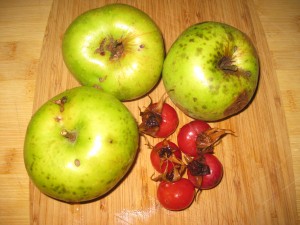
The apples and rose hips I collected
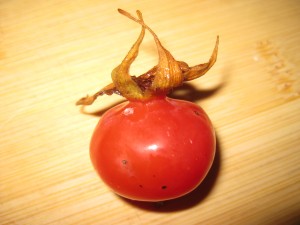
A close-up of the hip - ~2 cm diameter
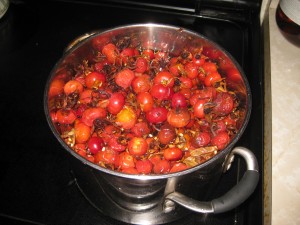
Rose hips are boiled in water for about 45 min
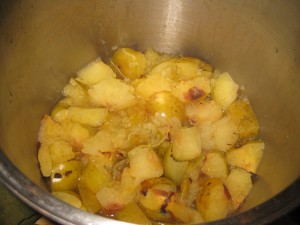
The apples only need to be boiled for about 20 min - boil seeds, stems and skin to extract the pectin
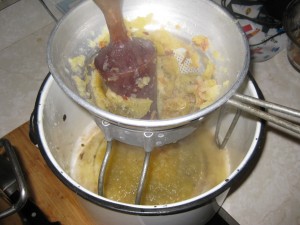
I hand-process the soft apples and hips through a conical food mill to extract the pulp
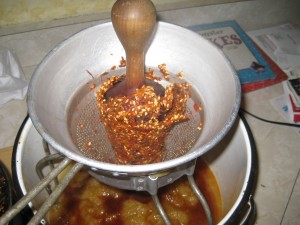
The mill separates out the seeds and skins so they don't contaminate the pulp for the jam
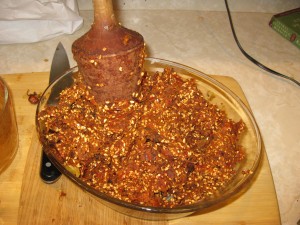
The "by products" heading out to the compost pile
I had 8 cups of apple and hip pulp. I added 4 cups of sugar and 1/2 cup of lemon juice . This gently boiled for about an hour to reduce and thicken the mixture. I prepared my mason jars by running them through the dishwasher – for sterilization, along with the spoons and tongs I was going to use. Not the perfect aseptic technique, but it works fine. The jars were filled, lidded, and banded, then loaded into my boiling water bath to process for 30 minutes.
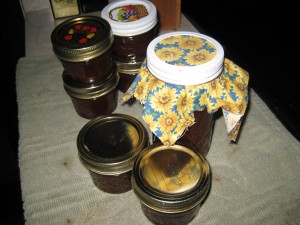
The completed jars - a bit of fabric enhances the jar to make a nice gift
All natural, organic (although not certified – you don’t certify a beach and the church grounds . . .), relevant, and tangible to learning.